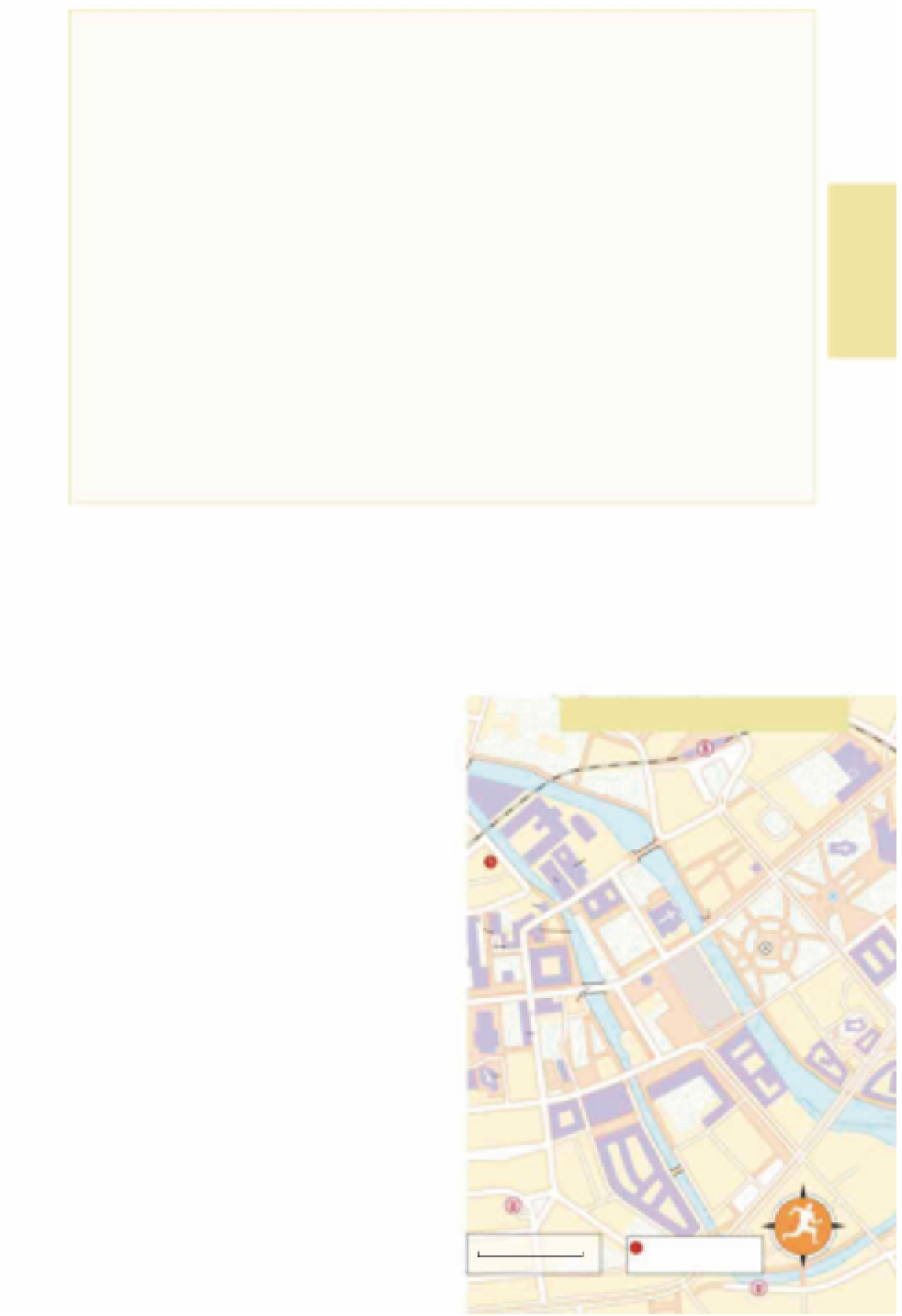Travel Reference
In-Depth Information
THE SCHLOSS
Work began on the
Schloss
in 1443 and the Hohenzollern family were to live there for nearly
half a millennium. It was constantly being extended and reshaped over the years; the first
major overhaul came in the sixteenth century, which saw it transformed from a fortress into a
Renaissance palace. Later the Schloss received a Baroque restyling, and subsequently virtually
every German architect of note, including Schlüter, Schinkel and Schadow, was given the
opportunity to add to it. For centuries it dominated the heart of Berlin, and until the 1930s
no city centre building was allowed to stand any higher.
On November 9, 1918, the end of the Hohenzollern era came when Karl Liebknecht
proclaimed a “Free Socialist Republic” from one of the palace balconies, now preserved in the
facade of the Staatsrat building (see p.251), following the abdication of the Kaiser. Almost
simultaneously, the Social Democrat Philipp Scheidemann announced a democratic German
republic from the Reichstag, and it was in fact the latter that prevailed, ushering in the
pathologically unstable Weimar Republic of the 1920s.
After the war the Schloss, a symbol of the still recent Imperial past, was an
embarrassment to the GDR authorities who dynamited its ruins in 1950, even though it was
no more badly damaged than a number of other structures that were subsequently rebuilt.
In its place came the
Palast der Republik
(see p.54), which outlasted the regime that
created it for almost a decade before being dismantled to make way for transitional
projects and ultimately a re-creation of the Schloss, as detailed in the Humboldt Box
museum (see p.54).
2
Neue Marstall
Immediately east of the Staatsrat lies the
Neue Marstall
, an unimaginative turn-of-the-
twentieth-century construction built to house the hundreds of royal coaches and horses
used to ferry the royal household around the city. During the 1918 November
Revolution, it headquartered the revolutionary committee and sailors and Spartacists
beat off government forces from it. A couple of plaques commemorate this deed of
rebellious derring-do and Liebknecht's
proclamation of the socialist republic. One
shows Liebknecht apparently suspended
above a cheering crowd of sailors and
civilians, while the other, to the left of the
entrance, has the head of Marx hovering
over excited, purposeful-looking members
of the proletariat.
MUSEUM ISLAND
Monbijoupark
Monbijoubrücke
Hackescher
Markt
Bode-
Museum
Alte
National-
galerie
Pergamon-
museum
Marienkirche
Friedrichsbrücke
James
Simon-
Galerie
Neues-
museum
AquaDom & Sea
Life Center
Breite Strasse
Breite Strasse
sweeps south beside the
Neue Marstall, but before it arrives at the
intersection with Mühlendamm - just
over the Spree from the Nikolaiviertel
(see p.66) - it passes the delicately gabled
Ribbeckhaus
. his late-Renaissance
palace from the seventeenth century is
one of the city's oldest surviving
buildings and now houses a branch of
Berlin's public
library.
Neptunbrünnen
Contemporary
Fine Arts
DDR
Museum
Berliner
Dom
Maxim-
Gorki-
Theater
Altes-
museum
I.M. Pau Bei
Theater im Palais
Lustgarten
Marx-Engels
Statue
Zeughaus
Humboldt
Box
Schlossbrücke
Site of
Stadtschloss/
Palast der
Republik
Neue
Wache
NIKOLAIVIERTEL
Nikolaikirche
Staatsoper
S CHLOSS-
P L AT Z
Opernpalais
Neue
Marstall
SCHINKEL-
PLATZ
Ephraim-
Palais
St-Hedwigs
Kathedrale
Former
Staatsrat
Ribbeckhaus
Jungfernbrücke
N
PETRI-
PLATZ
Berliner Dom
Am Lustgarten • Daily: April-Sept Mon-Sat 9am-8pm, Sun
noon-8pm; Oct-March Mon-Sat 9am-7pm, Sun noon-7pm • €7,
audio guide €3 •
W
berlinerdom.de • S-Hackescher Markt
HAUSVOGTEI-
PLATZ
Hausvogteiplatz
0
250
SHOPPING
Berliner Kunstmarket
1
metres
































